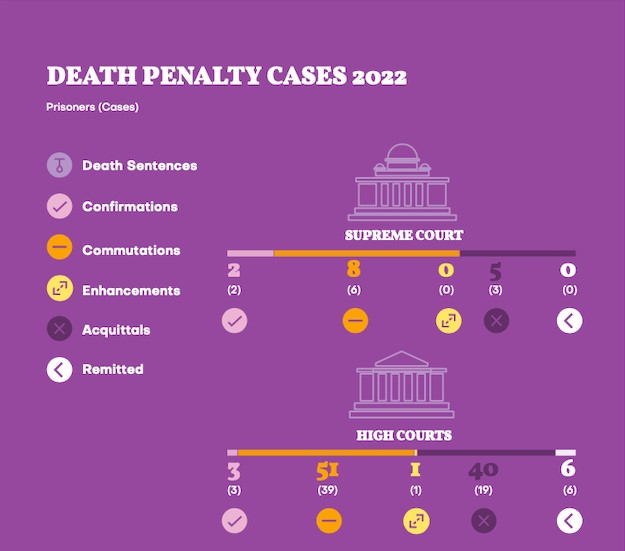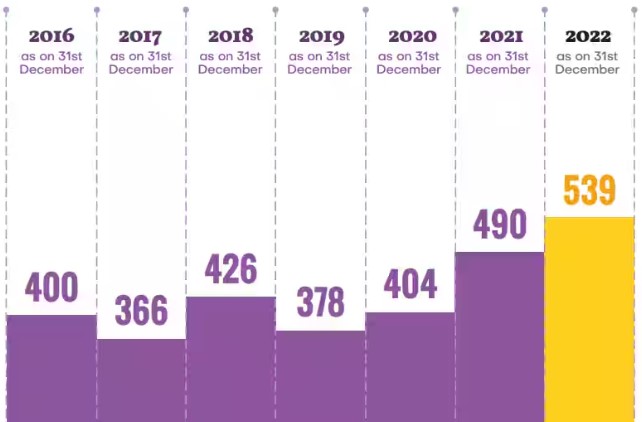Puisne Judge
The recommendation for appointment of the Supreme Court judges, the Collegium said it had taken into consideration the seniority of Chief Justices and ‘senior puisne Judges’.
- Meaning - The French origin word ‘puisne’ means ‘later born’ or younger.
- Usage - Puisne is almost always used in the context of judges, and essentially denotes seniority of rank.
- The term puisne judge is used in common law countries to refer to judges who are ranked lower in seniority, (except the Chief Justice of that court).
Common law - Common law is the body of law that is created by judges through their written opinions, rather than through statutes or constitutions (statutory law).
The United Kingdom (UK) and the Commonwealth countries, including India, are common law countries.
- In the UK - Puisne judges are judges other than those holding distinct titles.
- In India - All judges have the same judicial powers. As the senior most judge of a court, the Chief Justice has an additional administrative role.
- In India, there is a reference to a puisne judge only while considering the order of seniority for appointments, elevations to High Courts, etc.
- It does not have a bearing on the exercise of a judge’s judicial power.
- Related Topic - Collegium System
References
- IE - Who is a puisne judge, and what does the term mean?
Laboratory-Grown Diamonds
The 2023 Union Budget shines special attention on laboratory-grown diamonds (LGD).
Scientists at General Electric research laboratory in New York created the world’s first-ever LGD in 1954.
Naturally-occurring diamonds are created when carbon deposits buried within the earth are exposed to extreme heat and pressure.
- Laboratory-grown Diamonds (LGD) are manufactured in laboratories, as opposed to naturally-occurring diamonds.
- They are produced using specific technology which mimics the geological processes that grow natural diamonds.
- LGD is hard to be distinguished from naturally-occurring diamonds.
- Similarity - The chemical composition and other physical and optical properties including optical dispersion of the two are the same.
- Differences - Naturally-occurring diamonds take millions of years to form.
- Naturally-occurring diamonds require more energy to extract.
- LGD has much lesser environmental footprint than that of a naturally-occurring diamond.
- Methods - LGDs are mostly manufactured through 2 processes
- High pressure, high temperature (HPHT) method or
- Chemical Vapour Deposition (CVD) method.
- Both HPHT and CVD methods of growing diamonds artificially begin with a seed (a slice of another diamond).
- Application - Created in controlled environments, their properties can be enhanced for various purposes.
- LGDs are most often used for industrial purposes, in machines and tools as cutters.
- Pure synthetic diamonds have high thermal conductivity, but negligible electrical conductivity.
- Pure synthetic diamonds are used in electronics as a heat spreader for high-power laser diodes, laser arrays and high-power transistors.
2023 Budget Provisions for LGDs
- Reducing the basic customs duty (from 5% to nil) on seeds used in the manufacture of LGDs.
- A 5-year research grant will be provided to one of the IITs for research and development in the field of LGDs.
References
Death Penalty in India
According to the Annual Death Penalty Report - 2022, trial courts awarded 165 death penalties in 2022, most since 2000.
- The Annual Death Penalty report 2022 was released by Project 39A, a group from the National Law University, New Delhi.
- Report Highlights - In 2022, 165 death sentences were imposed by trial courts, which is the highest in a single year since 2000.
- As on 31st December 2022, 539 prisoners were living on death row, which is the largest death row population since 2004.
- The death penalty in Ahmedabad single bomb blast case is the largest number of persons sentenced to death in a single case since 2016.
- The cases of sexual violence constituting over half of the total death sentences imposed by trial courts in 2022.
- Despite the high number of death sentences in trial courts, very few death sentences are upheld by higher courts.
|

|
 Prisoners on Death Row Prisoners on Death Row
|
Article 39 A - Free legal Aid
Article 72 - Pardoning power of President
Article 134 - Right of appeal in any case where capital punishment was imposed on an accused in reversal of acquittal order.
References
- IE - Annual Death Penalty Report, 2022
- Project 39a - Annual Statistics Report - 2022
UPI for NRIs
The National Payments Corporation of India (NPCI) recently eased the use of UPI (Unified Payment Interface), to non-resident Indians (NRIs).
- Existing case - Even now, non-resident Indians (NRIs) can use the UPI app for payments.
- But for sim-linked payments process, Indian mobile phone number is required.
- Now - NPCI has eased the use of UPI to NRIs to make payments from their non-Indian mobile numbers.
- Non-resident account types like NRE/NRO that have international mobile numbers will now be allowed to transact with UPI.
- It can cover retail as well as wholesale transactions.
UPI is a simple payment technique that enables digital money transfers from one person to another.
- New Provision - In order to access UPI from their international mobile number, the user will need an NRO or NRE (non-resident ordinary or non-resident external) account.
- The user should first link the mobile number with an NRE or NRO account.
- Member banks must ensure that the accounts are only allowed as per the extant FEMA regulations.
- The onus of adherence to the guidelines/instructions issued by the RBI from time to time will rest with the respective banks.
- In addition to this, the remitter and beneficiary banks need to comply with respect to anti-money laundering (AML) rules.
- The first phase of rollout is extended only to 10 countries — Singapore, Australia, Canada, Hong Kong, Oman, Qatar, the US, Saudi Arabia, United Arab Emirates and the UK.
References
Dementia
According to a 2020 report published by the Alzheimer’s and Related Disorders Society of India, there are around 5 million people in India living with dementia.
- Dementia is a syndrome in which there is deterioration of cognitive functions beyond the usual consequences of biological ageing.
- It affects memory, thinking, orientation, comprehension, calculation, learning capacity, language, and judgement.
- Cause - Dementia results from a variety of diseases and injuries that primarily or secondarily affect the brain.
- The most common cause of dementia is Alzheimer’s disease and it mainly affects older people.
Worldwide, 47.5 million people have dementia and is expected to double every 20 years, going up to 135.5 million by 2050.
- Symptoms - depression, psychosis, agitation, aggression, disturbed sleep, wandering, apathy, and a variety of socially inappropriate behaviours.
- Treatment - There is currently no treatment available to cure dementia.
- The ‘Global action plan on the public health response to dementia 2017-2025’ provides a comprehensive blueprint for action in several areas for dementia.
References
- The Hindu - Dementia: What it is?
- WHO - Dementia